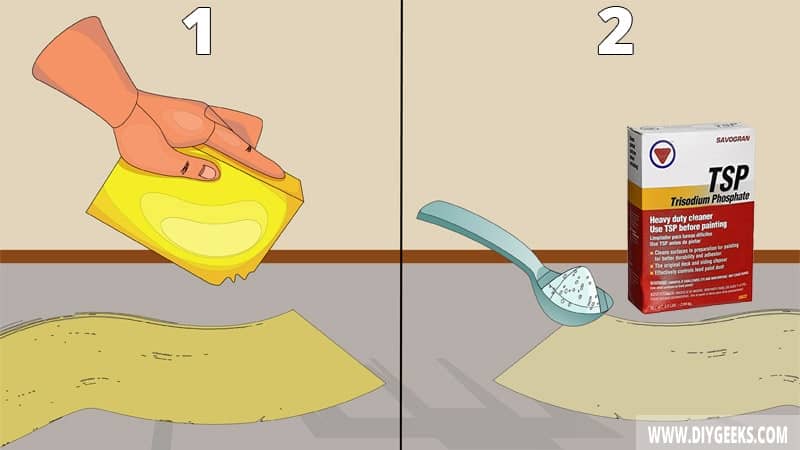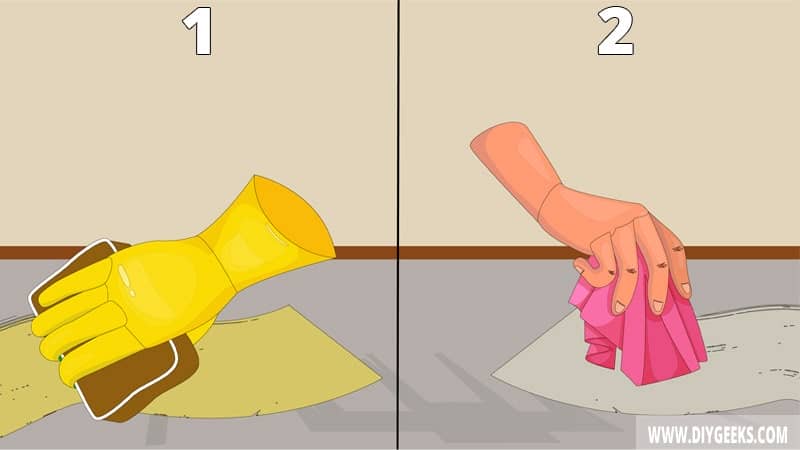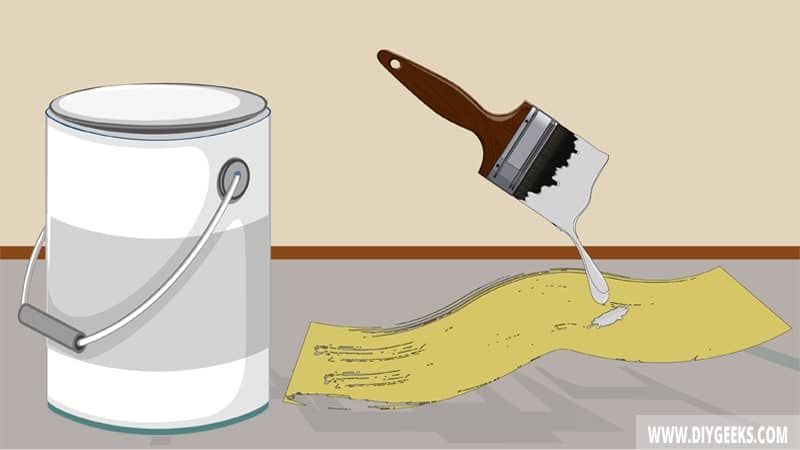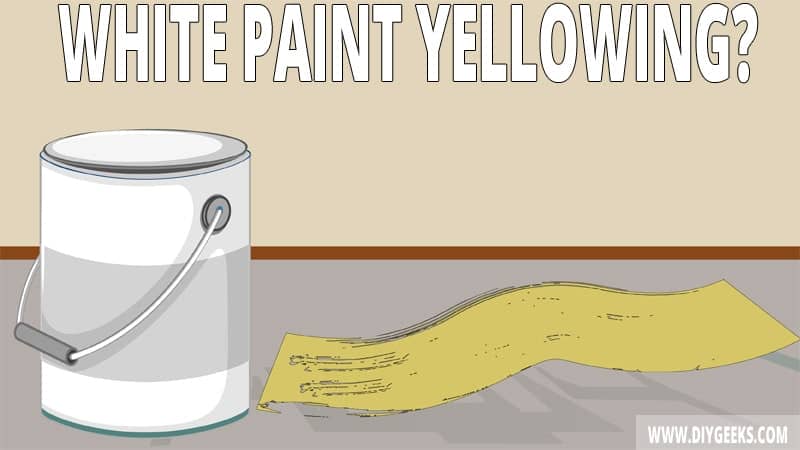The reasons white paint turns yellow include agings of resins, moisture, heat, UV exposure, and grease and stains.
To fix white paint turning yellow, use baking soda and TSP, sand the paint, or re-apply the paint.
Why Does White Paint Turn Yellow?
The reason white paint turn yellow include the following.
- Aging of Resins: Over time paint resins and binders go through chemical changes that lead to a yellowish finish.
- Moisture Exposure: If a paint finish is exposed to moisture (or water) it can turn yellow because of the water particles and minerals, and water vapor and steam.
- Heat Exposure: A white paint finish will turn yellow if exposed to constant heat (such as a radiator or heater). The heat enhances the paint resin aging process, making the finish look yellow.
- UV Exposure: A paint finish can turn yellow if exposed to constant UV Rays (sun). This happens with outdoor finishes that are sealed with a clear coat that isn’t UV-resistant. The UV rays make the clear coat appear yellowish, but won’t affect the underlying paint color shade.
- Grease and Stains: A paint finish can turn yellow if it accumulates grease, stains, dirt, or dust. The grease and stain colorants will set over the paint finish and create a yellow layer.
- Smoke: If a paint finish is exposed to constant cigarette smoke, it will turn yellow.
- Wrong Cleaner: A paint finish can turn yellow (or other colors) if you use the wrong cleaner when cleaning it.
How To Fix White Paint Turning Yellow?
To fix white paint turning yellow, do the following things.
- Use Baking Soda and TSP.
- Sand the Paint.
- Re-apply the Paint.
1. Use Baking Soda and TSP

If the paint’s yellow tint is caused by moisture, grease, or smoke, baking soda will fix it. Baking soda is an absorbent that can absorb yellow stains and moisture from the paint coating. Once the yellowish tint is removed, clean the finish with Trisodium Phosphate (TSP).
The tools you need for this project are listed below.
- Trisodium Phosphate
- Baking soda
- A clean bowl
- Rags
- A vacuum
- A bucket of water
- A foam sponge
Here is a guide for this method:
- Sprinkle baking soda powder over the paint finish.
- Allow it to sit for 12 hours.
- Vacuum the baking soda off the paint finish.
- Mix 2 spoons of TSP with warm water in a clean bowl.
- Damp a rag with the mixture and wipe the affected paint finish.
- Wait 5 minutes.
- Use a damp rag to clean the finish.
- Allow the paint finish to dry.
- Optionally touch up the finish with another paint coating.
2. Sand the Paint

If the paint’s yellow appearance is caused by dirt, stains, or grease, sanding will fix it. The extra fine-grit sandpaper (440-grit) will remove the yellowish layer over the paint, remove surface imperfections and bumps, and create a smooth layer.
The tools you need for this project are listed below.
- Fine-grit sandpaper (440-grit).
- A vacuum or duster
- Rags
A guide for this method is listed below.
- Clean the affected paint finish with a dry rag.
- Use extra fine-grit sandpaper (440-grit) to sand the paint finish.
- Inspect the finish every five (5) minutes to check if the yellowish tint is removed.
- Clean the finish to remove the dust.
- Touch up the finish with an extra paint coating if needed.
3. Re-apply Paint

If the paint’s yellow appearance is caused by the resin’s aging or a high oily amount, you must remove the finish and re-apply it.
The tools you need for this project are listed below.
- Paint
- Paintbrushes
- A paint scraper
- Paint-stripping compound.
- Rags
- Stain-blocking primer
- Sandpaper
- Water-based polyurethane varnish
A guide for this method is listed below.
- Remove the paint finish with coarse-grit sandpaper (40-grit) or paint-stripping compound.
- Once the paint is removed, sand the surface with medium-grit sandpaper (100-grit).
- Apply a stain-blocking primer coat.
- Re-apply the paint.
- Seal the paint with a sealer.
How To Prevent White Paint From Turning Yellow?
To prevent white paint from turning yellow, do the following things.
- Seal the finish with a UV-resistant sealer.
- Use water-based paint as it tends to yellow less.
- Use a stain-blocking primer.
- Allow the paint to dry properly before exposing it to water or moisture.
All paint types can turn yellow if exposed to certain conditions. For instance, if you expose paint to grease or stains, it will turn yellow regardless of the paint type or brand.
However, water-based paints tend to yellow less as they use water as their solvent and aren’t formulated with oily deposits.
Sealing the paint finish with a moisture and UV-resistant sealer can protect it from turning yellow. The sealer creates a barrier over the finish and protects it from elements that can create a yellowish appearance.


